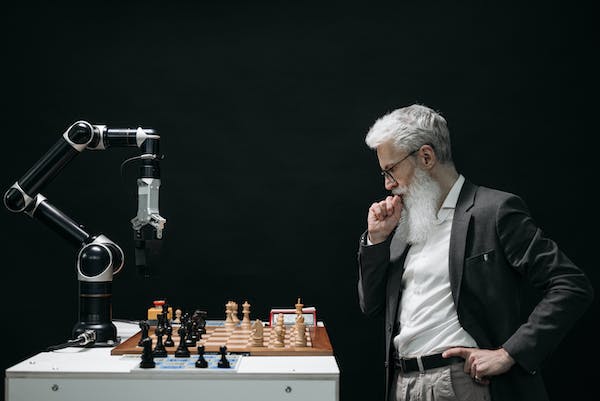
02 Jul RAGE AGAINST THE MACHINE? – A FUTURIST’S TAKE ON THE FUTURE OF AI AND ROBOTICS
If there’s anything we’ve learned as robotics futurists, consultants, and keynote speakers, it’s that the AI and automation spaces are constantly changing. Moreover, there’s no shortage of innovations happening on every front – especially as organizations are constantly working to imagine new applications and uses for this technology. Bearing this in mind, we robotics futurists have no lack of ways to keep busy.
Case in point: The rise of collaborative robots, or “Cobots.” Unlike traditional robots, these automatons are designed to work alongside humans, enhancing productivity while ensuring safety. To this extent, they can be easily programmed and reprogrammed for a variety of tasks, making them ideal for small- to mid-sized enterprises. Moreover, these automatons’ applications are expanding across industries, from manufacturing to healthcare.
Talk to a robotics futurist long enough and they’ll tell you that swarm robotics is another fascinating trend that mimics the behavior of natural swarms like bees or ants. By employing a large number of relatively simple robots, tasks can be performed more efficiently and resiliently. This concept has potential applications in diverse fields such as agriculture, disaster management, and exploration.
BTW – the advent of soft robotics has also captured significant interest. Inspired by living organisms, these robots have bodies made of flexible, elastic materials and are capable of movements that mimic those of living organisms. Their inherent safety and adaptability make them ideal for applications requiring human-robot interaction or interaction with delicate objects.
Needless to say as well, machine learning and AI also continue to redefine the capabilities of robots. These technologies are enabling robots to learn from their environment, adapt to changes, and make decisions. Robots with AI can understand and respond to natural language, recognize patterns, and even predict human behavior, opening up possibilities for highly personalized robotics applications.
Moreover, the integration of the Internet of Things (IoT) with automated solutions is driving the rise of cloud robotics as well. In effect, cloud-connected robots can access vast amounts of data, leverage cloud-based AI services, and learn from the experiences of other robots. This trend not only enhances the capabilities of individual robots but can also lead to the development of “robot societies,” where robots learn from each other and work collaboratively.
Let’s not forget the expansion of robotic process automation (RPA) either, which uses software robots or “bots” to automate routine, rule-based tasks. The application of RPA is expanding from back-office tasks in sectors like banking and healthcare to more complex applications, driven by advancements in AI and machine learning.
Furthermore, the advent of autonomous vehicles and drones has opened a new frontier in robotics. From autonomous cars to delivery drones, these robotic systems have the potential to significantly disrupt transportation, logistics, and many other sectors.



